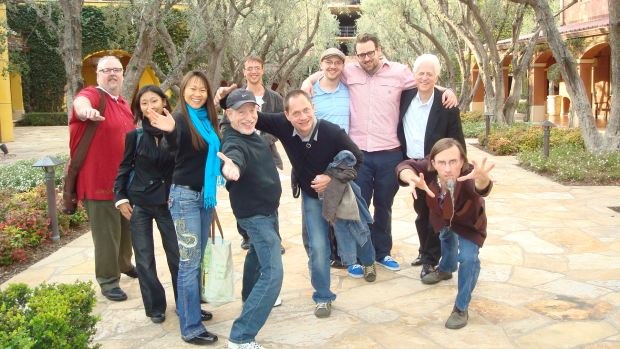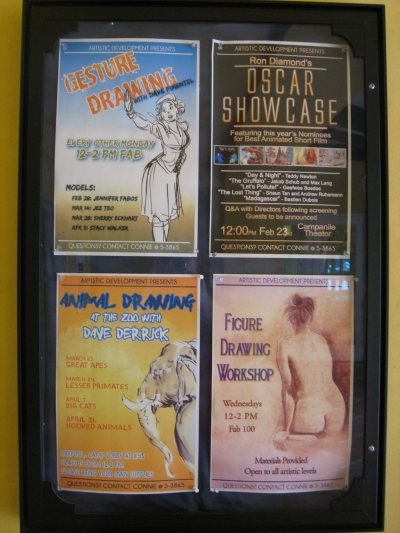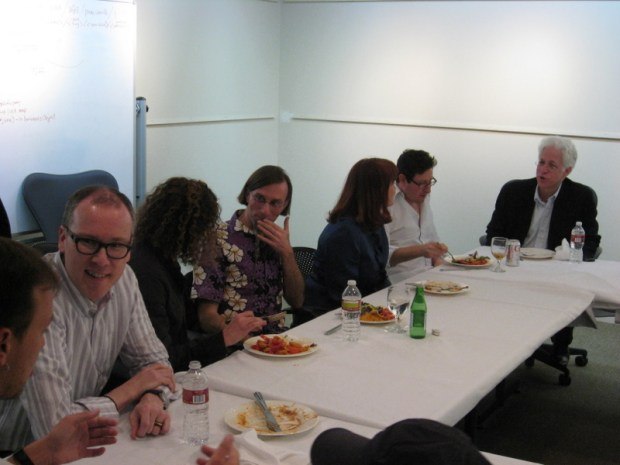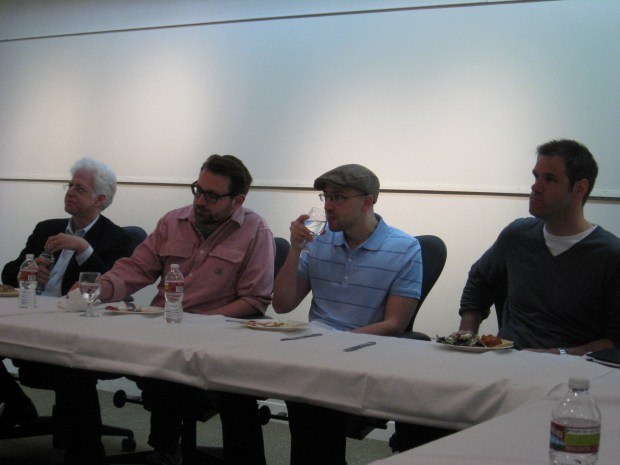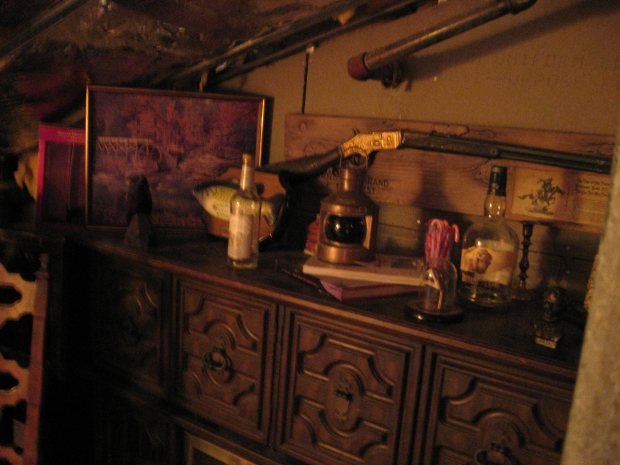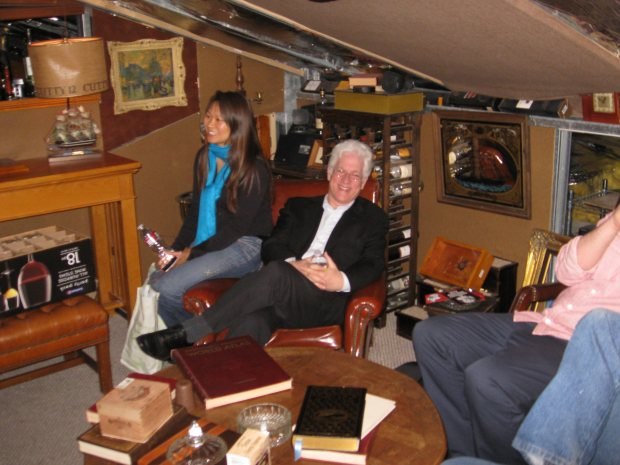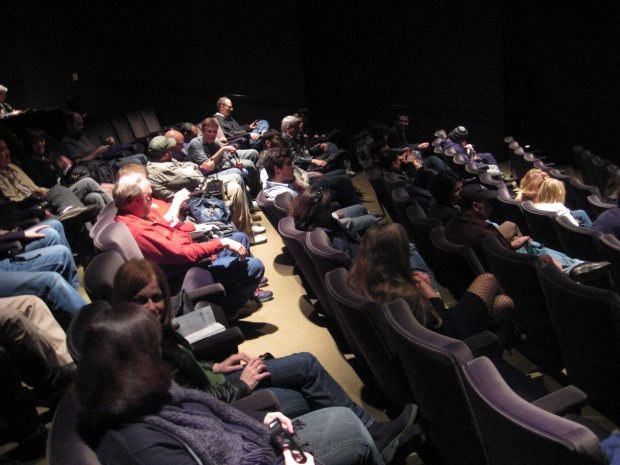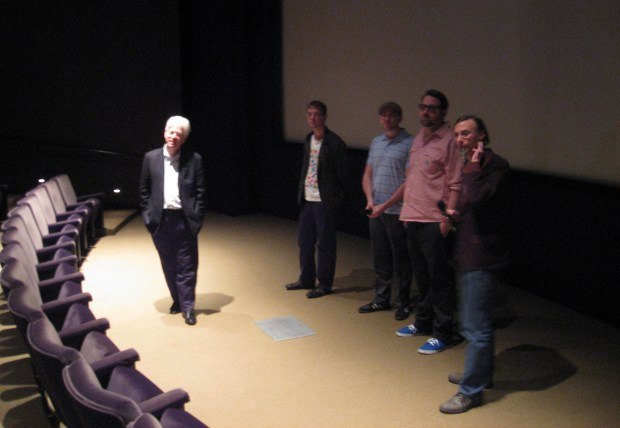Every year for more than a decade we’ve toured DreamWorks’ expansive Glendale campus with either the Animation Show of Shows, our Oscar Showcase tour, or both. We’re always greeted with open arms and we’re always shown tasty morsels of upcoming films – last year, for example, Simon Otto showed us 20 minutes of How To Train Your Dragon well before it was released. This year did not disappoint.
Written by Dan Sarto
Every year for more than a decade we’ve toured DreamWorks’ expansive Glendale campus with either the Animation Show of Shows, our Oscar Showcase tour, or both. We’re always greeted with open arms and we’re always shown tasty morsels of upcoming films – last year, for example, Simon Otto showed us 20 minutes of How To Train Your Dragon well before it was released. This year did not disappoint. We scampered about all over the newly built-out animation building, over 100K square feet of offices, high-res monitors and talent. Talking to people here, you can’t help but sense their enthusiasm as they discuss their work, the studio and DreamWorks’ string of successful films. From Jeffrey Katzenberg’s lunchtime visit to our jaunt through the new motion-capture studio, our afternoon at DreamWorks left a tremendous impression on our assembly of animators and producers, and myself as well.
Our chaperone, Angela Lepito, the Production Manager for DreamWorks Education, has hosted and toured us around the campus several times in the past. She’s extremely knowledgeable and very, very accommodating – it’s not easy wrangling such a large group, especially when every few feet, one of us stops for an extended look at a piece of artwork or something cool and shiny. After we all had coffee and some had their obligatory cigarette, we headed off to see the studio.
Here are a few of the highlights:
First stop was a private screening of several mostly finished scenes from Kung Fu Panda 2. Based on what we saw, this film looks great and should do very well. Scott Seiffert from Marketing walked us through some of the key points of the story.
Valerie Lettera-Spletzer, Head of Final Layout, gave us a presentation on stereoscopic 3-D. She showed us how DreamWorks uses 3-D not just for obvious visual effects but in more subtle ways. She walked us through a series of simple images gathered from around the campus, first showing a normal 2D photograph, then, showing a more visually appealing version of the image in stereo – for example, a rather dense tree, non-descript in 2D, suddenly becomes an immensely complex and layered image in 3-D. Then she showed us one of their new 3-D still camera prototypes, which of course, was passed around the room and fussed over like a moon rock in the hands of a group of JPL scientists.
We all crowded into the office of Nico Marlet, one of the studio’s senior character designers and a key visual force behind How To Train Your Dragon. As we stood shoulder to shoulder, he passed around stacks of drawings from Kung Fu Panda 2 and Dragon, each more intricate than the next. The animators were quite in awe – Nico showed great patience, answering a barrage of questions from 10 nosey strangers suddenly poking around his office. It was nice that Bastien and his producer, Ron Dyens were able to speak to Nico in French. Their English is good, but it’s obvious they miss some things on the tour because of the language barrier. Max and Jakob, on the other hand, speak English better than some people I know who were born and raised in the US, though Geefwee and I had to explain the words “rigmarole” and “irksome” to Jakob early in the tour.
Lunch, as they say, was a great “schmooze fest.” We were joined by a number of people from development, including Alex Schwartz, Head of Development, Damon Ross, Development Executive, Chris Kuser, Development Executive, as well as Director Tim Johnson and Valerie Lettera-Spletzer. Connie Siu and Michelle Rosell, who work with Angela, also joined us. For many in our group, this is the first time they’ve ever had such intimate access to senior studio staff. There was a lot more talking than eating. Midway through lunch, we were visited for a few minutes by Jeffrey Katzenberg. He greeted and congratulated everyone. It’s important to note that he also thanked us not only for the studio screening but for the screening that evening in the studio’s theatre for ASIFA Hollywood. Support at DreamWorks for the tour and for the annual Animation Show of Show screenings is not just an afterthought, it’s a conscious decision made by the head of the studio. Unless out of town, Jeffrey has made a point to join the tour for lunch or at least meet everyone for a few minutes every year we’ve been coming to DreamWorks.
The basement of the new building is home to a brand new motion caption studio, stuffed with new gear and ready for use. As Angela explained, motion capture is used for motion study, lighting and staging experimentation, not for animation on their shows.
After careful navigation through a small maze of unfinished rafters and metal wall frames, we squeezed into the Hidden Lounge, a very cool creative oasis recently built out by some folks in the animation building. It’s a series of adjoining rooms in the rafters of the building sporting an eclectic design esthetic, part hunting lodge, part Winchester Mystery House. Very much a work in progress, nonetheless, the lounge has a very homey feel, like a pot luck supper, where everyone contributes something to the festivities and nothing ever feels too planned. Sometimes you end up with lots of soup and no spoons, but you manage to eat somehow with a fork and after considerable slurping, ultimately, the meal is extremely satisfying.
The full day at DreamWorks end with an evening screening for ASIFA-Hollywood. The Campanile Theatre is full once again and after Q&A with the few animators who remain standing, we drag ourselves home, ready to start again the next morning.
Dan Sarto is Publisher and Editor-in-Chief of Animation World Network.
